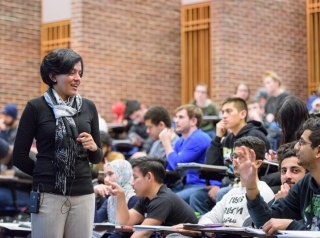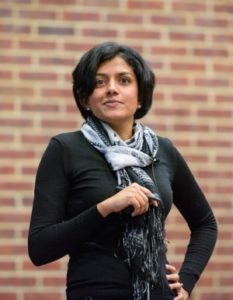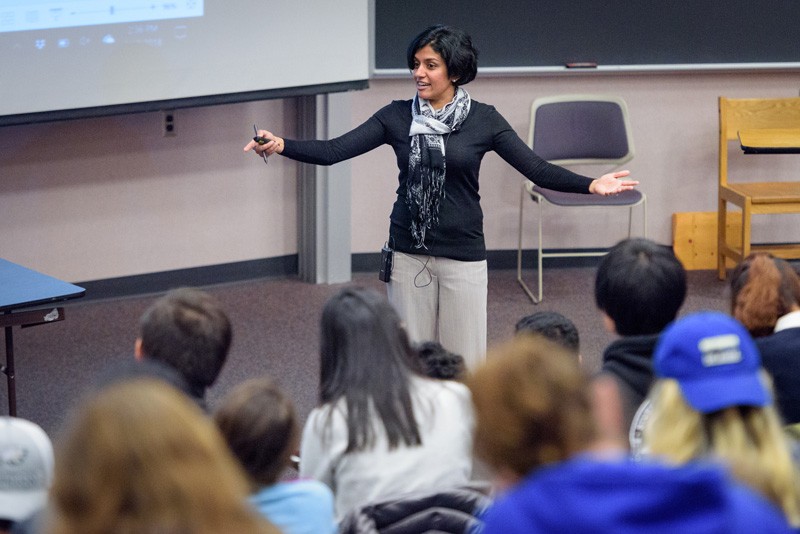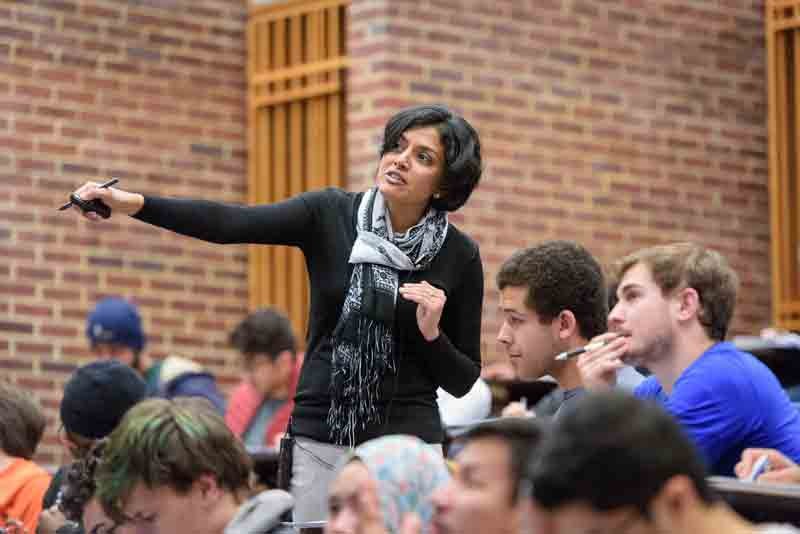UD Engineering’s Arthi Jayaraman explains her approach
Arthi Jayaraman wears many hats.
She is a tenured associate professor at the University of Delaware. She teaches one class each semester and serves as the graduate program director for the Department of Chemical and Biomolecular Engineering. In this role, she works closely with coordinator Kathleen Young to help students navigate through the graduate process. On top of that, she does her own research, regularly travels to present at conferences and personally advises about nine students of varying degree levels.
And she has a puppy named Barnaby that she adores.
For her research, Jayaraman’s team designs polymers to advance or discover various materials. This means she makes simulation models on the computer to test and design the properties of potential new products. Car tires, bumpers and creating genes to fix damaged DNA are examples of projects she may work on developing. Once a model is ready, she shares her findings with experimental collaborators who develop the physical product.
While Jayaraman does high-level research, she also teaches students the basics. She was the co-teacher of Introduction to Chemical Engineering with Joshua Enszer during the spring semester. Knowing the basics is fundamental to her current work, but teaching the subject to first-year students presents a challenge beyond the material itself.

Arthi Jayaraman, a UD associate professor, recognizes that each group of students presents a new teaching challenge and she tries to adapt her lesson to meet their needs.
“A lot of time is spent deciding how best to present the material,” Jayaraman said. “Because there are different students of different backgrounds and different skill sets, so communicating that same material the correct way is where most of my time goes.”
During one of her Tuesday afternoon classes in the spring, Jayaraman recapped the previous week’s lesson on rate determination. She walked around the room while lecturing and tried to make the environment more intimate, given there were 140 students in the class. She pulled up a problem on the projector and challenged the students to solve it.
“I’d like to hear from some of you,” Jayaraman said to the class. “What was your initial process?”
As the students worked on the problem, both professors and the teaching assistants walked around the room to give class members a few minutes of one-on-one attention. This is a big part of her philosophy for teaching this course.
“That’s one way for us to figure out how they think about a problem and what they seem to be enjoying,” Jayaraman said.
What results is a lot of tracking. Who’s in class? Who’s absent? How are students progressing and why is someone falling behind? She said they give a lot of quizzes to keep up with each student. She also offers students a lot of time to get any help they may need. By her calculation between class time, recitation and office hours the students have the opportunity to interact with the professors 16 hours a week.

Arthi Jayarman serves as the graduate program director for the Department of Chemical and Biomolecular Engineering, which means she tries to to help students navigate through the graduate process.
While the information itself does not change, she said she has learned several valuable lessons each time she teaches the course. Speed of talking, remembering many students are seeing this material for the first time and some smaller things — like avoiding certain colors in case any students are color blind — are all points she’s picked up over the years.
“The challenge for me is not the material and keeping up with it, but rather adapting to every group of students.” Jayaraman said. “Every group of students is different.”
It’s safe to say Jayaraman is busy. When she can find some free time, she likes to travel and eat. She described herself as a foodie. For her most recent trip, she went back to India, where she grew up, for the first time in 15 years. And puppies need attention, too.
That said, she admits finding balance is hard. When asked what is the most frustrating part of juggling her roles, she said time.
“I wish I had 48 hours in a day,” Jayaraman said. “Partly because you have only one life and it needs to be balanced and it’s not easy. You cannot make everyone happy. I wish I could, but I can’t. I just don’t have the time.”
Jayaraman said she genuinely enjoys teaching, or she wouldn’t do it. Some of the same students she taught in the introductory class four years ago are now in her senior lab course. That full circle is rewarding.
She also said it helps there is some separation between her research, Introduction to Chemical Engineering and the more senior level classes she teaches.
“I think having a difference, to some extent, to what I teach and what I do for research helps,” Jayaraman said. “It’s variety, and to have variety is much better than doing the same thing in class and in research.”

Arthi Jayaraman, a UD associate professor, leads a research team that designs polymers to advance or discover various materials.

